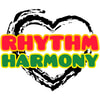DRUM INFO
The first evidence we have of drums dates back to 6000BC. Drums are played on all continents, by people of all races and cultures. Drums are played for ceremonies, rituals, celebrations, healing and therapeutic reasons, communication, community building, and sheer fun and enjoyment. The benefits of drumming reach us on every level - mental, physical, emotional and spiritual.
There are hundreds, if not thousands, of different types of drum, many of which are very similar but have different origins. Just a few of them are illustrated here.




